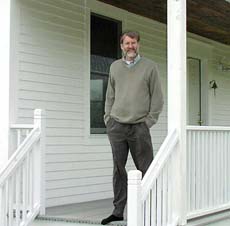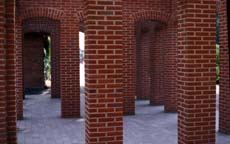index
More radical ideas
click on images for full-size:




Ownership

To each his own space (brick sculpture by Per Kirkaby, Denmark)

Changing perceptions of how one might live
Interventions to emphasize and increase linkage can work within the existing legal and property relations. But there are limits to what can be done within our current federal and state policies and legal and social structures that favor expansion and define property owners as maximizers of real estate value, while deploying only a narrow range of development strategies. Among reformers, the New Urbanists have been the most successful in showing that property values can be increased while employing more humane development strategies. Their proposals require changes in zoning and other ordinances, but they stay within the general American notions about property. However, besides widening the range of options within the current structure, other changes might alter legal and commercial structures. Redefining how people relate to one another as owners and holders of property would make their mode of inhabitation more complex. Kevin Lynch questions the notion of absolute land ownership (as does Wright in his Broadacre City vision). For instance, the growing use of conservation easements breaks down the tight unity of ownership rights. Such easements can be appropriate in suburbs as well as in rural areas. Lynch points out that other nations' legal systems sometimes separate out and assign to different agents the various rights (of presence, of use and action, of regulation of access, of appropriation, of modification, of disposing to others) that are lumped together as individual ownership in the Anglo-American scheme. (Lynch 1981, 205f)